Folk(s), it is the Samaritan’s Feast of Tabernacles this week! What a didactic opportunity.
(Update: you may learn more from the short article Andrea wrote for the latest Economist)
Last Friday my friend Dre and I set out to walk up Mt Gerizim to explore the Samaritan village of Kiryat Luza. I live on Mt Gerizim, but I only realised recently that this is the same mountain said to be the site of the holy temple of the Israelites – according to the Samaritans – and also where Abraham nearly sacrificed Isaac.
We followed directions to the only bar on the map, which seemed a sure-fire way of locating Samaritans. This (possibly non-existent) bar turned out to be not in the Samaritan village at all, but in a posh suburb called Til at the end of a very Waste Land-y walk. However the residents were friendly and we were given a lift to the right part of Gerizim by the proprietor of Fun Land, Nablus’ theme park.
We drove straight in without let or hindrance, though a settlement nearby means large armoured Israeli vehicles frequently crawl, insect-like, through the village. On the main street there is a large sign for the Samaritan museum, writ in Samaritan, Arabic, English and Hebrew.
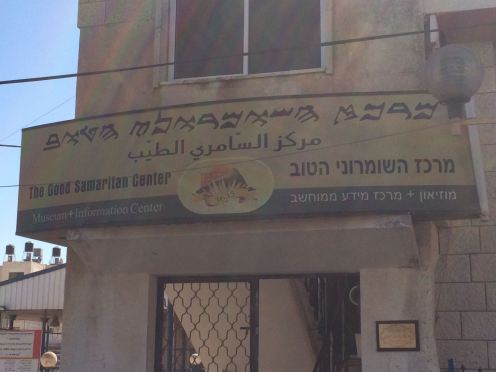 This is not the museum.
This is not the museum.
This is the museum:
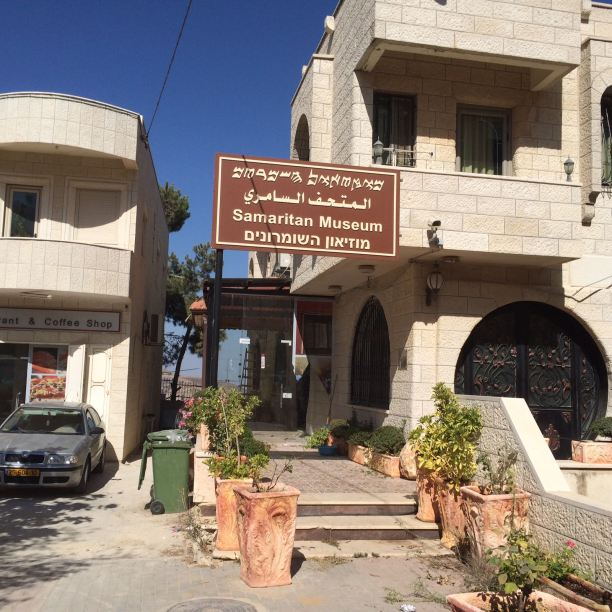 The Heineken parasol at the café next to it was written in Russian.
The Heineken parasol at the café next to it was written in Russian.
I was really psyched for this museum, because accounts I’d heard had likened the displays to a high school project and made the guide sound a little loopy. Sadly, it was well-put together and the guide was most respectable. Dre and I were the only visitors at the time.
Our cicerone was no less than Hosni Cohen, brother of the Samaritan High Priest and 174th in a direct traceable line from Adam (I can only get to 31 gens of my fam). A friendly scholar, he explained the alphabet, gave an overview of religious customs, intoned from their bible, pointed out the sparse vegetal growth on Eibal (the cursed mountain), described the course of the Israelites in the desert and talked about his family (ancestral and descendant), all whilst reassuring callers to his mobile that he’d be with them any minute.
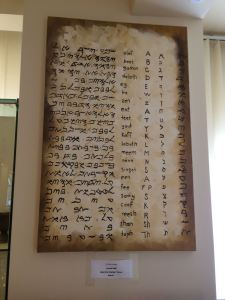
After photos, I asked our honorable guide what his thoughts on Palestine are. ‘I don’t believe in a peaceful solution, but I pray for it’, he said.
The Samaritan populace not so long ago lived predominately in the old town of Nablus, but during the last intifada fighters used their homes as bases, leading to them being rather shelled, and what with this and other bothers they moved up to near the site of their holy temple. There are Roman ruins on top of the mount too, and more recent ones.
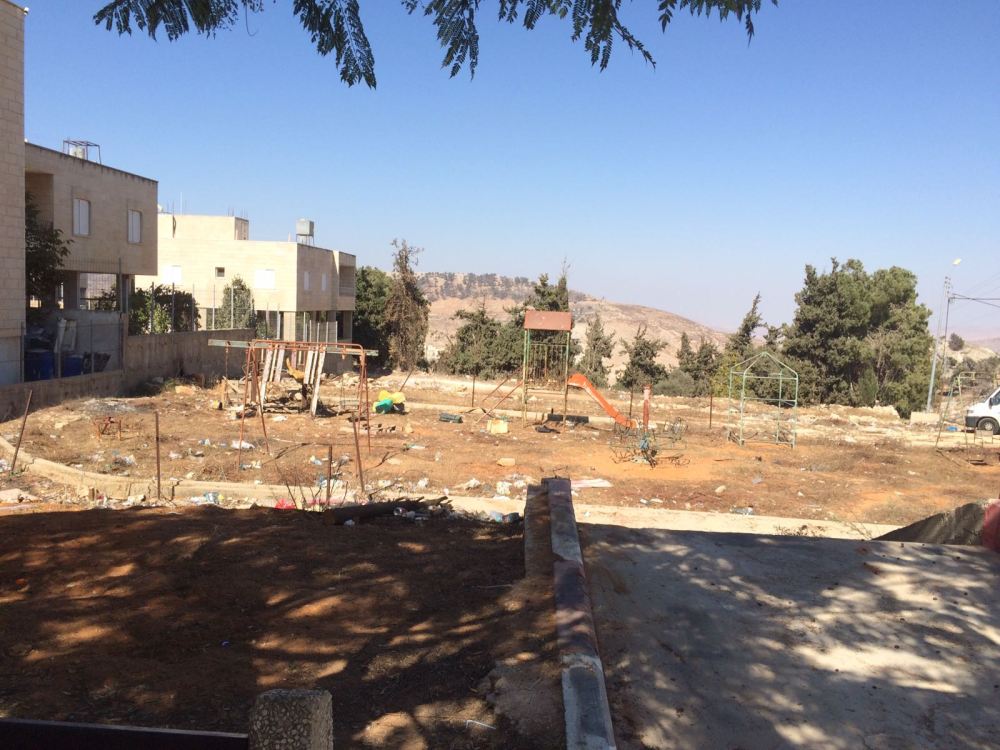
The Samaritans still practise their religious festivals on top of the mountain. They also adhere to old biblical customs such as having menstruating women keep away for a week. (Women are secluded after birth as well; 40 days after an xy and 80 for an xx). There are a couple of hundred living there, university-educated, speaking Arabic, holding three passports and boasting homemade arak and tahini. The population of this ancient community is ever-dwindling.
The village is probably best known to students in Nablus as being the only place in the city to buy alcohol. Imho this is not the best main reason as it is also a place where at least one person has a PET DOG. Nabulsis don’t really do pet dogs so much. I was v happy to meet Lassie the Alsation.
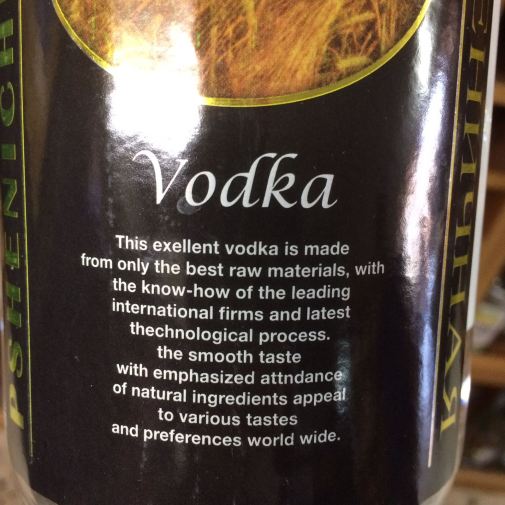
I mentioned at the start of this post that it is Tabernacle time! This week brings the Samaritan festival of succa (sukkot) following the Day of Atonement. An incredible array of fruit and branches is assembled. More information here.
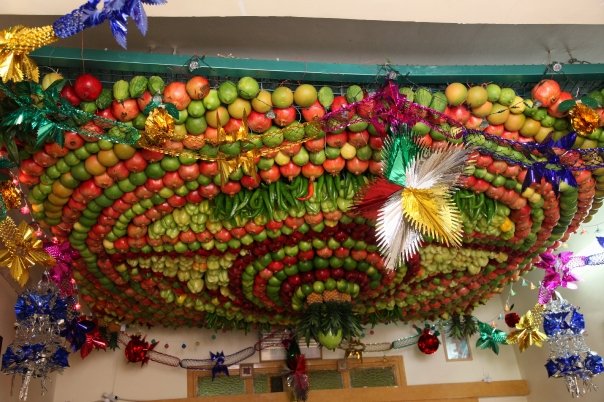
The views from Kiryat Luza are stunning, so yes you should go and walk up there. I also noticed that we were not too far from the enormous mansion which perches always above Nablus. I kindly took a pic of this and then zoomed in on it too.
Dre taught Hosni to say cheese for photographs. How well it works! Here I am saying cheese in front of an old bible – five books are the same as the Torah – and family tree.
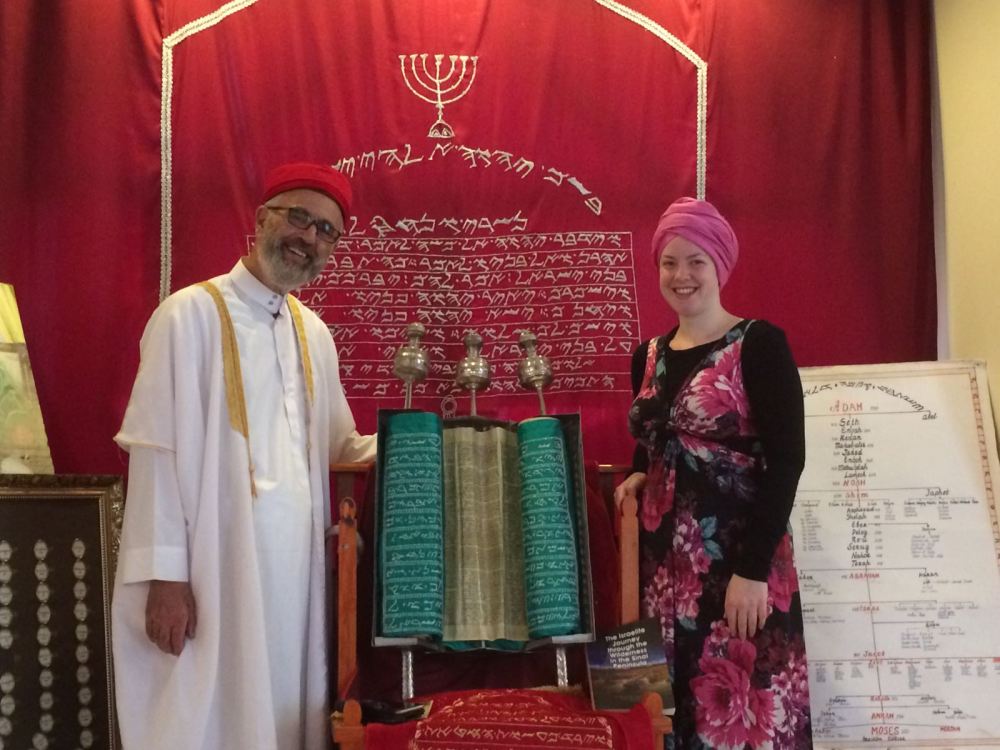
I really liked our museum guide and our trip and I read the entire wikipedia article about the Samaritans.





Wow, fascinating! Does Andrea speak Arabic? or Hebrew? Hosni looks nice.
LikeLike
Dre’s Arabic is pretty good! He impresses my housemate. It’s Cairene tho. Hosni is an absolute doll xx
LikeLike